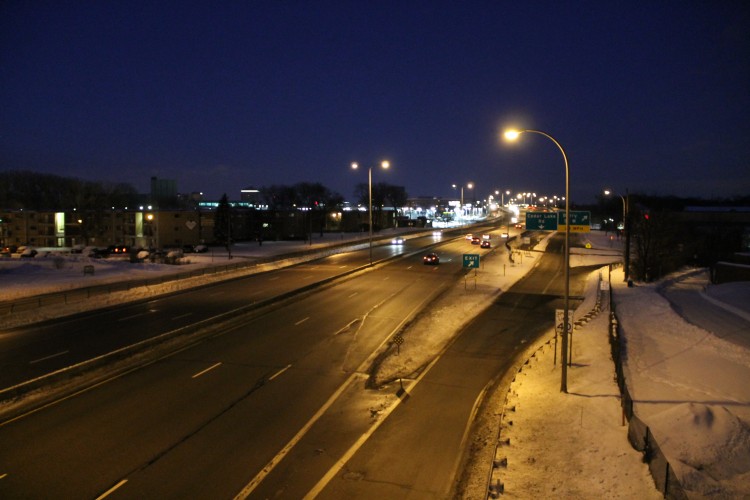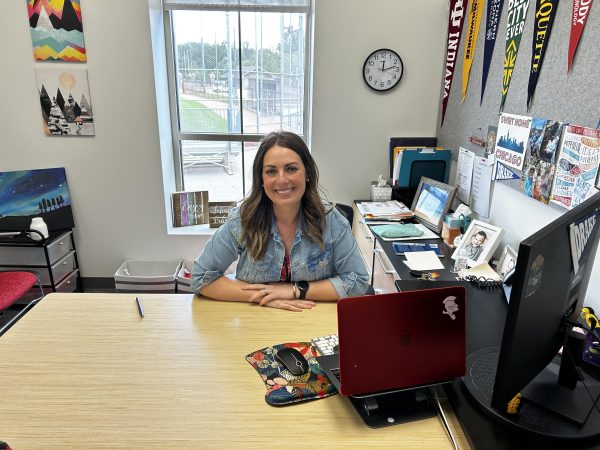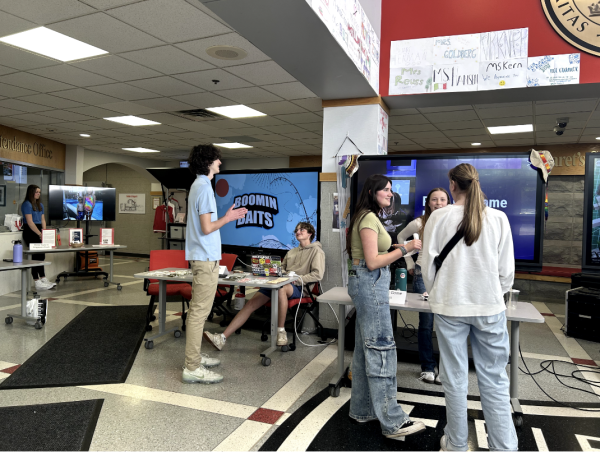Highway 100: the road to renovation
Changes in the scenery over Highway 100 will come as the construction project commences.
Heading into the coldest stretch of winter, the roads are getting icier and drivers are more prone to losing control of their vehicles. As students have learned in thirty “well-spent” hours in Driver’s Ed over the years, adverse conditions, impatient drivers, and slim, slick roads do not mix well. The Minnesota Department of Transportation recognizes these dangers and has a construction project on Highway 100 scheduled to start in 2014 to reduce risk.
Recent events highlight the perils of Highway 100. On November 21, 2013, a car deviated left off a ramp near the intersection of Highways 7 and 100 and dropped into an ice-cold pond. Tragically, two children, aged five and seven, were killed in the accident. Accidents like these draw attention to extremely perilous winter roads. One of the many BSM students who traverses this road twice a day during the school year, Annie Applehoff, shares her thoughts on the upcoming construction. “I’m going to have to leave my house earlier and being a triplet that’s hard because my two brothers have to leave at the same time as me,” Applehoff said
The interchange between Highway 100 and Highway 7, according to the Minnesota Department of Transportation, accounts for 2.7 million dollars in crash costs alone every year. Under the Highway 7 bridge, there have been 121 accidents the two-year period of 2007 to 2009. There is no doubt that this is an extremely dangerous junction; the only question is what steps are being taken to increase the safety of this area.
Since the planning stages began in 2011, the Minnesota Department of Transportation is directly addressing this specific overpass. The project, estimated to cost 60 million dollars, seeks to improve the intersection safety of Highway 7 and County Road 5 as well as recover traffic operations of Highway 100. April Crockett is a West Area Engineer and Project Manager for the construction scheduled to take place along Highway 100. “The goal of this project is to replace the two structurally deficient bridges, improve the safety at these two interchanges and to improve the overall traffic flow operations of TH100,” Crockett said.
The Minnesota Department of Transportation expects positive impacts on safety and traffic flow as a result of changes to the ramps at Highway 7 and County Road 5. At each of these interchanges, acceleration lanes will be added, enabling vehicles entering the highway to more smoothly merge into traffic. For BSM students who travel north on Highway 100 to school each weekday, the absence of a significant acceleration lane at County Road 5 often means a morning wake up call. “You really have to pay attention as you get to County Road 5 that a fast-moving car doesn’t side swipe your car as it speeds on to Highway 100,” comments senior Katie Burns.
Frequent Highway 100 traveler Mr. Richard Olson, BSM Vice President of Advancement, looks forward to fewer starts and stops on his way home when the project is completed. “When the project is completed in 2016 it will hopefully make the traffic flow better. In the morning the backup occurs on Northbound 100 where 36th, Highway 7 and Minnetonka flow into Highway 100 and the right lane stops, causing those in the right lane to merge into the middle and left lane.” When completed, these lanes each will be 12 feet wide. This is the standard width for the bulk of Minnesota’s roadways. However, studies show that it isn’t the size of the roadways that account for an accident and fatality rate in Minnesota that is lower than the national average. Rather, the Office of the Legislative Auditor reports that “driving under the influence of alcohol or drugs, speeding, and inattentive or reckless driving are among the most significant factors causing accidents”.
The timing and extent of the work on Highway 100 will challenge the morning and afternoon travel plans of many BSM students and families. This is no small project to take on. Preliminarily, the actual construction of the undertaking is scheduled to take place from late 2014 to 2017. Jeff Jacobs, Mayor of St. Louis Park, reports that the city has been involved in this project for years. “When it is done, though, our hope is that it will improve traffic along 100 for years to come,” Jacobs said.




















































Dave Roy • Jan 31, 2014 at 7:33 pm
Should have been done 10 years ago